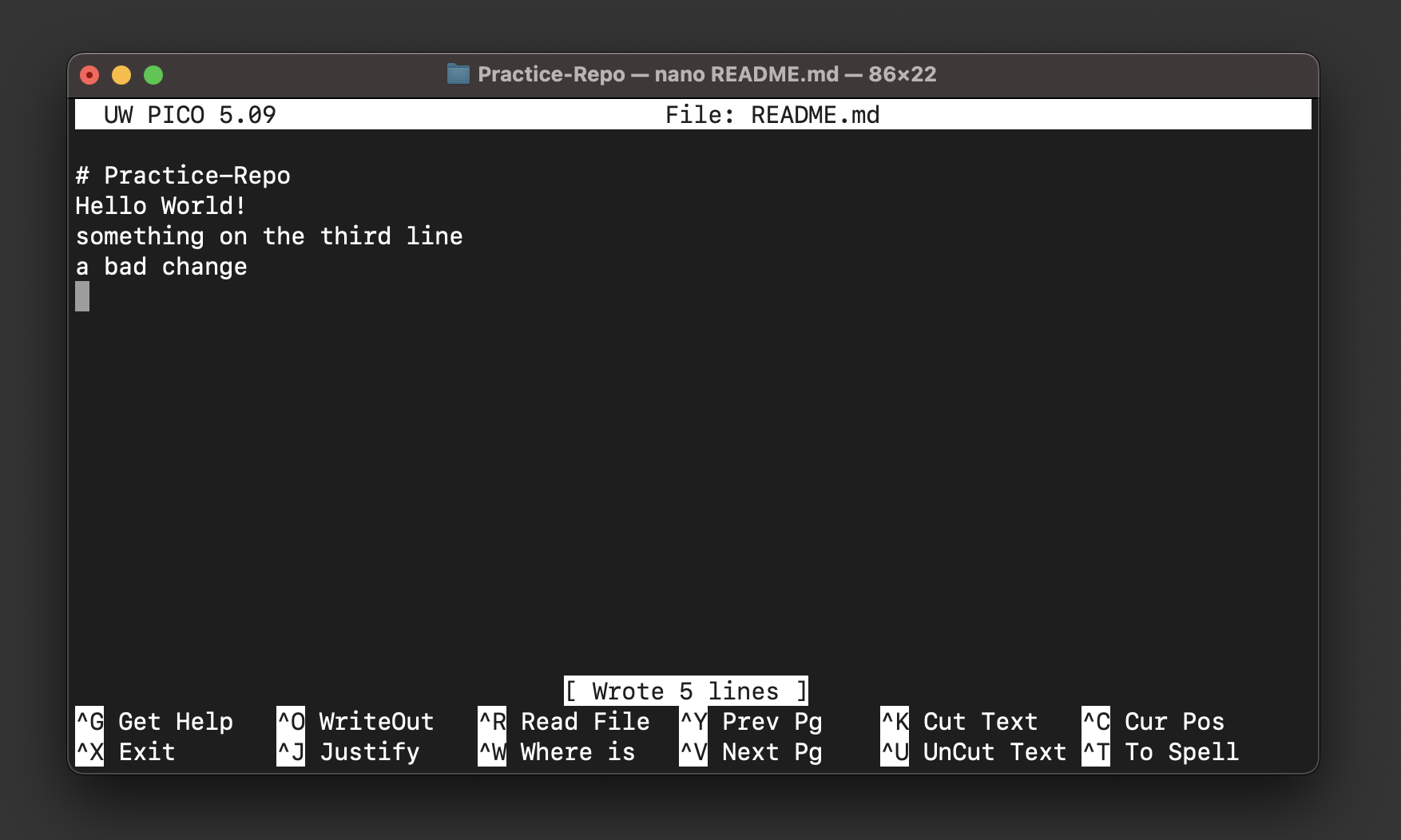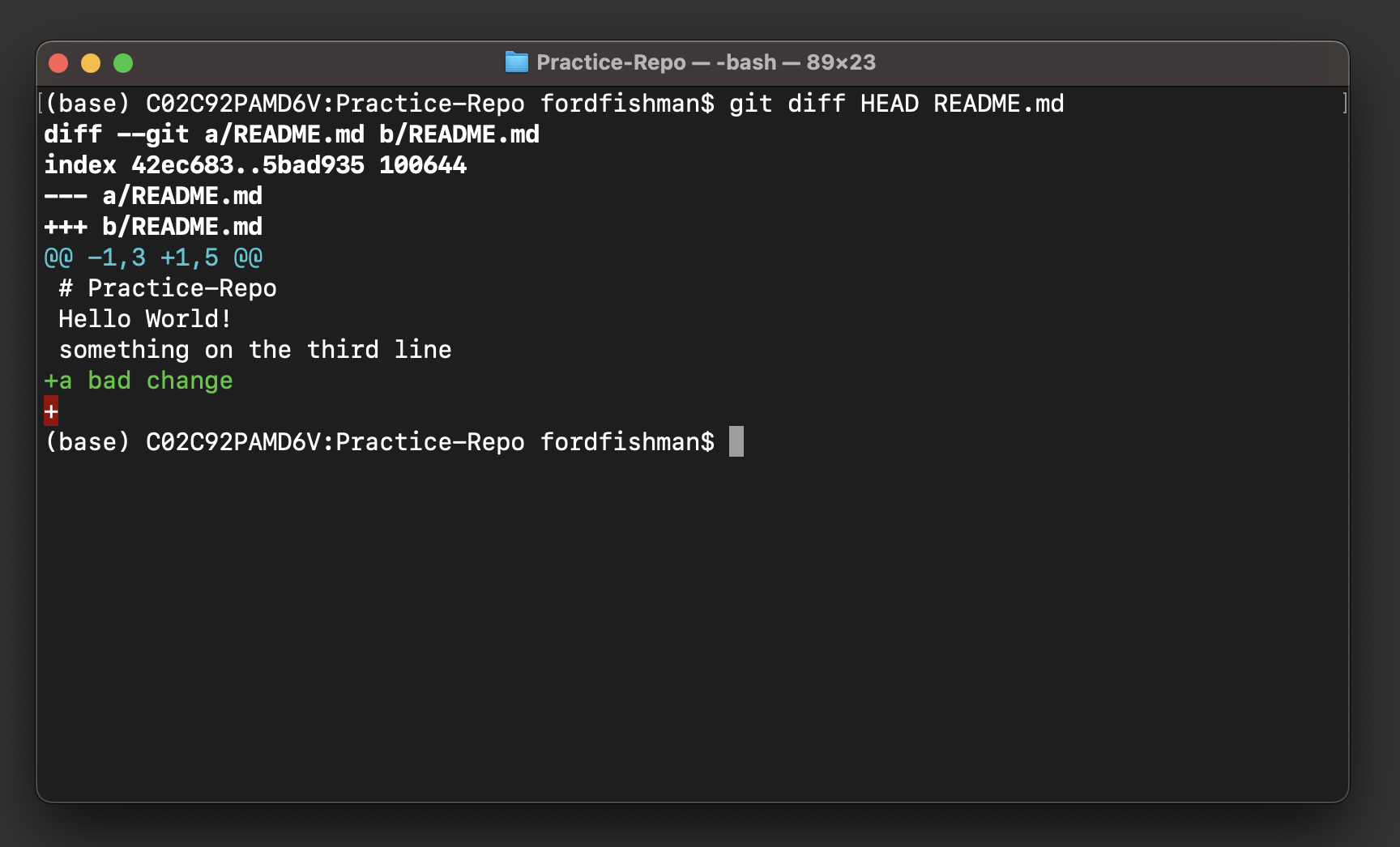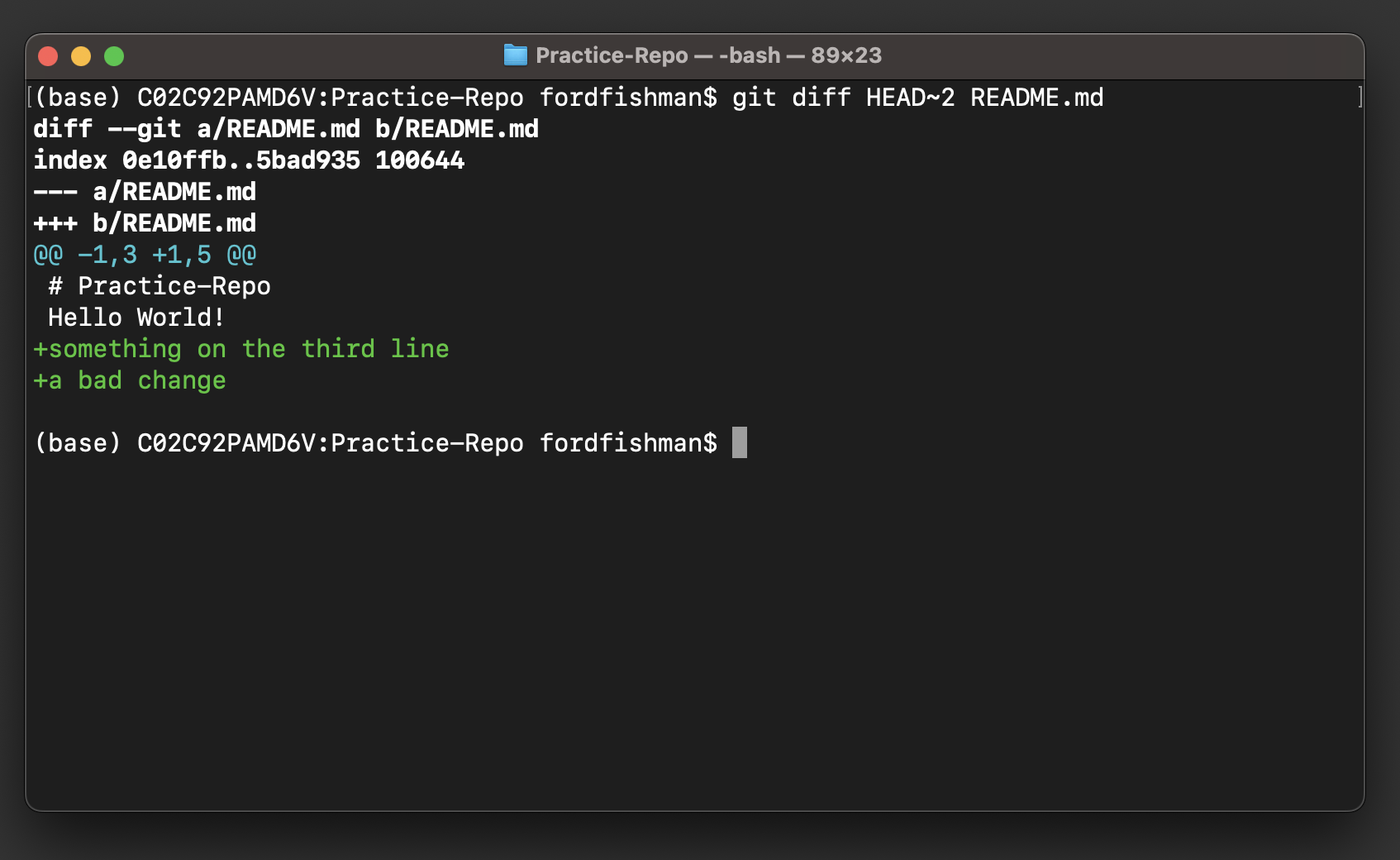Git utilities¶
git diff¶
Previously, we used git diff to see the difference between a local
and incoming remote file. However, it can also be used more generally to
show differences across a file’s history.
Let’s simulate making a poor change to our code by adding a line to our
README with nano.
$ nano README.md

In our specific case, it’s pretty easy to remember what change we made and remove it. But if you are editing code across many lines in different files, it can be become more challenging finding where changes are.
Running git diff HEAD will show you all unstaged changes across all
of the files in the repository. HEAD is essentially a variable that
by default references the last made commit. Thus, git diff HEAD
shows the difference between the last commit and our uncommitted
changes.
If we only want to see changes for a specific file, we can specify that filename, as well.
$ git diff HEAD README.md

Warning
If you don’t include HEAD (git diff), the command will
work only when the changes are unstaged. You can add
git diff --staged for changes in staged files specifically.
We can also see the difference between our uncommitted changes and
several commits ago by adding ~{NUMBER} to HEAD.
$ git diff HEAD~2 README.md

This shows us the changes from 2 commits prior to HEAD, the current
commit.
You can also use the first 7 or so characters of the commit ID to compare.
$ git diff 36237fea README.md
Restoring old versions of files¶
If we want to restore a previous commit of a file, we can use
git checkout with the commit ID and filename. This will erase all
uncommitted changes and revert the file.
$ git checkout 36237fea README.md
If you run cat, you can see the file has indeed changed. Running
git status shows that our file has staged changes as well.
git diff HEAD shows that the staged changes are indeed removing
lines added after this commit.
If we want to return to our last made commit, we can still do that, as well.
$ git checkout HEAD README.md
git status will now show no uncommitted changes.
Bonus¶
Some text editors and Integrated Development Environments (IDEs) will label modified lines and can display the full differences within the editor, as well as having other Git integrations. VS Code is one such example of a powerful editor with Git integration.
Ignoring files¶
Sometimes you have some files in your repository that you don’t want
saved in version control and available publically on GitHub. We can
specify files for Git to ignore in a file called .gitignore.
Let’s make a new file with touch and pretend it has super secret
and private information. git status will show that this newly
created file has not been staged yet.
$ touch super_secret_private.csv
We do not currently have a .gitignore in our repository yet. We can
make one with nano and add in our .csv file.
$ nano .gitignore

Save your changes, and if you run git status again, you will no
longer see our private file available to be staged. Only .gitignore
will be there. Feel free to stage and commit it.

We can also give .gitignore broader specifications for files to
ignore using *, or the wildcard symbol. If we added *.dat to a
new line in .gitignore, git will ignore all files with the .dat
extension. If you specify *secret*, git will ignore all files with
the word “secret” in their name.
You can also tell have git ignore whole folders by specifying FOLDER_NAME/.
Finally, you can combine these methods. results/*secret*.dat will result
in git ignoring all files in the results folder that have secret in their title
and .dat as their extension.

Wildcards
The wildcard essentially means “look for anything”. If you
had a line in .gitignore with only *, this would match all
files, and git would ignore everything in the repo. *.dat looks for
anything but must end in .dat.
Some files you may want to ignore might be program-specific files that
show up in your repository when executing or building your program. When
you initialize a repository on GitHub, you are given the option to
initialize with a .gitignore. You can pick from what language your
project will be in (like Python or R), and a .gitignore file will be
created in the initial commit with some files already included (like
*.pyc or .Rhistory).
Warning
Adding files to .gitignore will remove their tracking from future staging in commits. However, if these files have already been previously committed, these committed versions will remain in future commits. If you need to completely remove a file from version history, see this Stack Overflow post.
Recap:¶
HEAD: identifier that points to the most recent local commit.gitignore: a file where you can list files you want left out of version control